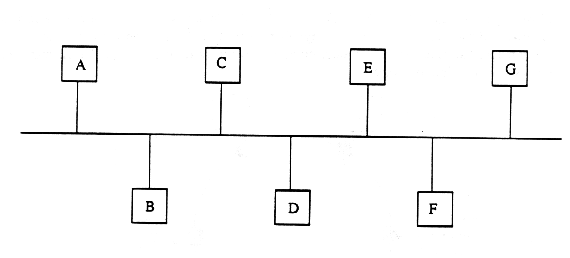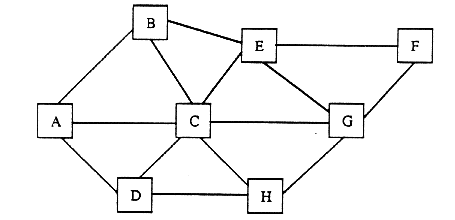

Any communication system must consist of a sender, a channel and a receiver. In addition, when data is to be transmitted over the system it must be coded in some specific manner and there must be some kind of error control built into the system. However, when computer networks are involved another important factor which must be considered is the methods which have to be employed to ensure that information is transmitted to the correct station. In this context networks can be divided up into two broad areas:
The features of any particular network depend largely on the way in which the components of the network are connected to one another - the topology.
This hierarchical topology is one of the commonest in use for Wide Area Networks. Generally the node at the top of the tree is in control of the entire network, although occasionally each node has control of those immediately below it.

The diagram above shows that the tree network is relatively simple to control. However, its structure can lead to a number of problems.
Again this topology is generally used for Wide Area Networks, however, some LANS have a Star structure. Usually the central node has the peripherals that are to be shared across the network attached to it, and often it acts as a file and printer server to the rest of the stations on the network. The diagram below shows this:

In this arrangement of components the stations are connected by point-to-point links and consequently form an unbroken circle. Usually rings are unidirectional and operate by passing packets of data from one station to the next until the correct destination is arrived at - thus rings are broadcast systems.
When a station receives a packet, it checks the address before retransmitting it. If the packet is for that station, it is marked as having being received, before retransmission and hence when the packet reaches the sender once more, the mark indicates that it has been received. The diagram below shows a typical ring topology:

Well known ring network systems include the Cambridge Ring and the IBM Token Ring.
In this context all the stations are connected to a single cable, as shown below:

The best known bus network is Ethernet - Econet is an Ethernet-type network.
The Mesh layout is used in Wide Area Networks and allows multiple routes between hosts, as shown below:

A mesh network where every node is connected to every other node is known as a fully connected network, and is shown below:
